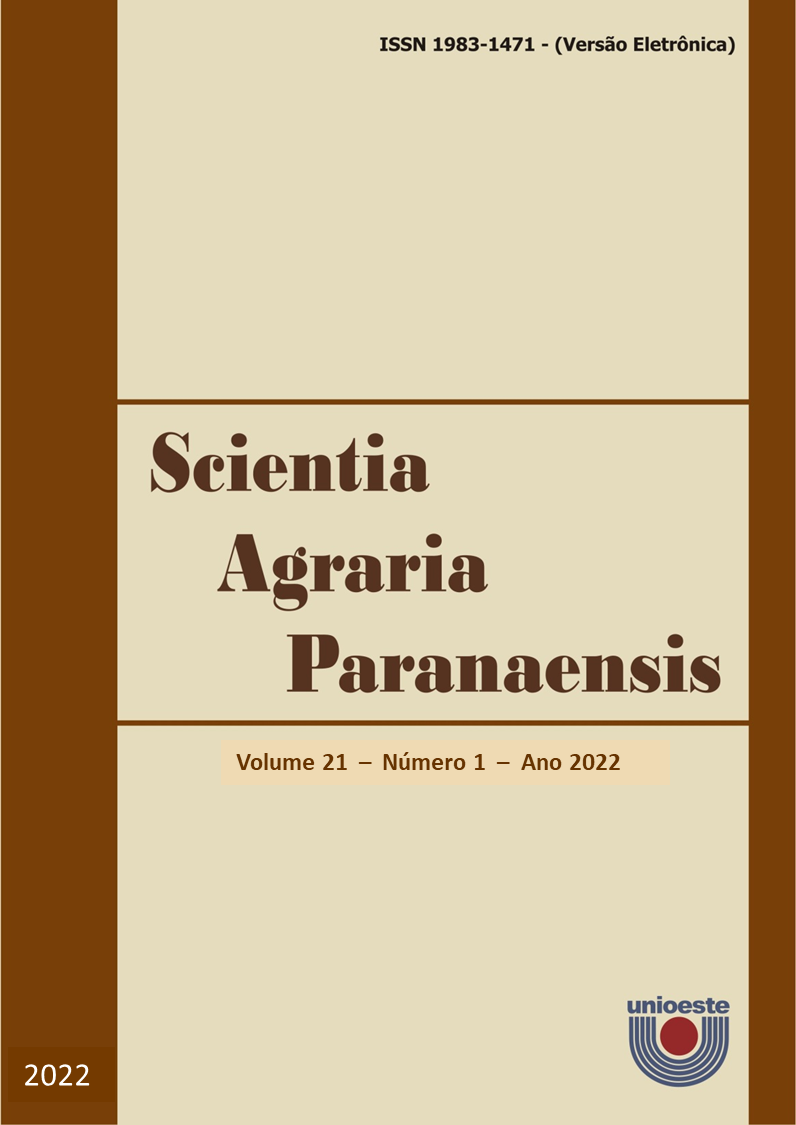Soil alterations by chronosequence of pastures in crop-livestock-forestry systems
DOI:
https://doi.org/10.18188/sap.v21i1.28629Resumo
The intensive use of land has accelerated the loss of soil quality, a process that can be avoided by adopting conservationist production systems, such as the Integrated Crop-Livestock-Forest (CLFI system). It is noteworthy that in the Southwest of the State of Maranhão a substantial portion of soils in rural properties are degraded and in distinct stages of erosion, since they have been exploited for decades with non-properly managed pastures. Therefore, the objective of this work was to emphasize the importance of physical and chemical changes in the soil of pastures under crop-livestock-forest integration in general and in the Amazon region of state of Maranhão, Brazil. Therefore, a literature review was conducted through a search for studies in the Google Scholar database, which encompasses multiple other databases, such as Scielo, Elsevier, Scopus, Capes, and others. In face of the conditions of degradation in pastures throughout the state of Maranhão and the broad distribution of native forests such as Babassu forests, the use of technology from CLFI systems could allow for their recovery and sustainable status by means of economically and ecologically feasible productivity. Research on this field is therefore necessary to highlight short- and long-term efficiencies regarding carbon sequestration and quality of organic matter on the soil.
Downloads
Publicado
Como Citar
Edição
Seção
Licença
Aviso de Direito Autoral Creative Commons
Política para Periódicos de Acesso Livre
Autores que publicam nesta revista concordam com os seguintes termos:
1. Autores mantém os direitos autorais e concedem à revista o direito de primeira publicação, com o trabalho simultaneamente licenciado sob a Licença Creative Commons Attribution que permite o compartilhamento do trabalho com reconhecimento da autoria e publicação inicial nesta revista.2. Autores têm autorização para assumir contratos adicionais separadamente, para distribuição não-exclusiva da versão do trabalho publicada nesta revista (ex.: publicar em repositório institucional ou como capítulo de livro), com reconhecimento de autoria e publicação inicial nesta revista.
3. Autores têm permissão e são estimulados a publicar e distribuir seu trabalho online (ex.: em repositórios institucionais ou na sua página pessoal) a qualquer ponto antes ou durante o processo editorial, já que isso pode gerar alterações produtivas, bem como aumentar o impacto e a citação do trabalho publicado (Veja O Efeito do Acesso Livre).
Licença Creative Commons
Esta obra está licenciada com uma Licença Creative Commons Atribuição-NãoComercial-CompartilhaIgual 4.0 Internacional, o que permite compartilhar, copiar, distribuir, exibir, reproduzir, a totalidade ou partes desde que não tenha objetivo comercial e sejam citados os autores e a fonte.


